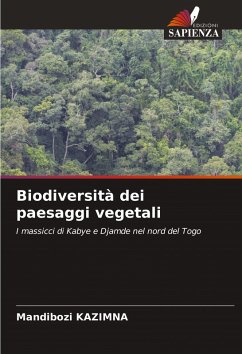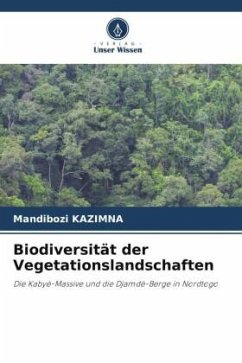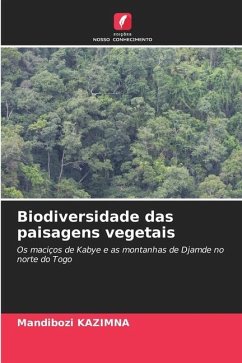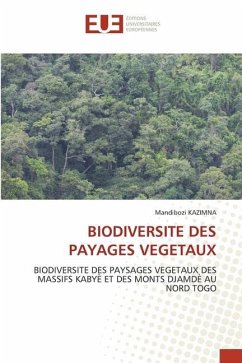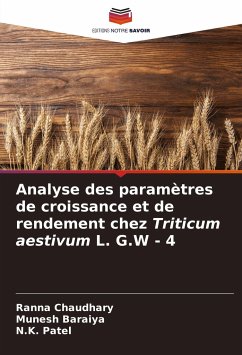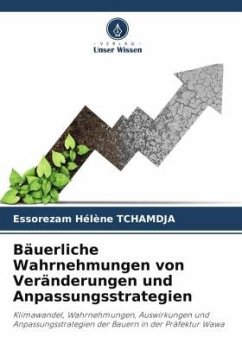
Biodiversity of plant landscapes
The Kabye massifs and Djamde mountains in northern Togo
Versandkostenfrei!
Versandfertig in 6-10 Tagen
29,99 €
inkl. MwSt.

PAYBACK Punkte
15 °P sammeln!
The study of the vegetation of the Kabyè massifs was carried out with the aim of contributing to knowledge of floristic diversity and plant groupings. The methodological approach used involved documentary research and the collection of floristic and ecological data in 171 plots measuring 40 m x 40 m. The study identified 301 species belonging to 74 families and 206 genera. The most represented families are Fabaceae, Poaceae and Euphorbiaceae. The most abundant and dominant biological types are phanerophytes and therophytes. In terms of phytogeography, the crude and weighted spectra of Sudano-...
The study of the vegetation of the Kabyè massifs was carried out with the aim of contributing to knowledge of floristic diversity and plant groupings. The methodological approach used involved documentary research and the collection of floristic and ecological data in 171 plots measuring 40 m x 40 m. The study identified 301 species belonging to 74 families and 206 genera. The most represented families are Fabaceae, Poaceae and Euphorbiaceae. The most abundant and dominant biological types are phanerophytes and therophytes. In terms of phytogeography, the crude and weighted spectra of Sudano-Zambezian and Pantropical species show that they are the most represented. Using the DECORANA method, six plant formations (06) and sixteen (16) plant groupings were identified. The species richness of these groups varied from 28 to 121 species, while the Shannon index and Pielou equitability ranged from 3.69 to 4.10 bits and 0.85 to 0.97 respectively. Biodiversity in the Kabyè massifs is under threat from human activity, and it is important to control this threat by taking appropriate measures.



